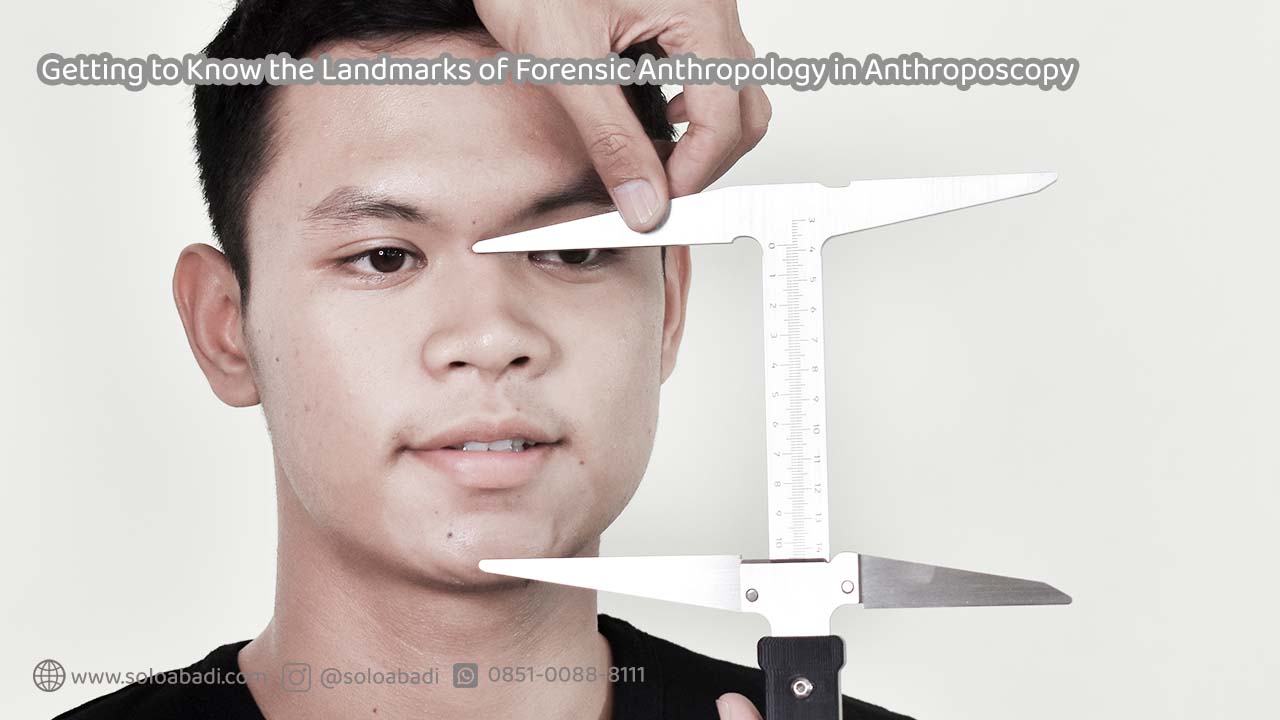Anthroposcopy is a method of analyzing the human body based on physical characteristics. This method is often used in forensic anthropological studies. The analysis of human physical characteristics can only be determined through anthropometry or the measurement of the dimensions of the human body.
Several points on the body or forensic anthropological landmarks can represent physical characteristics whose information can be used for needs in various fields. Here are some of the landmarks of forensic anthropology in anthroposcopy!
The Role of Anthroposcopy in Forensic Anthropology
In our previous article, Getting to Know Somatometry, Widely Used In Forensic Anthropology! we have already mentioned about Forensic Anthropology. The science that is part of forensic studies is side by side with other sciences, especially Anthropometry. Anthropometry is the study of measuring the dimensions of the human body in order to obtain physical characteristics that can then be classified. This classification of physical characteristics is discussed in Somatometry.
in Somatometry, Forensic Anthropology is needed to know the geographical location of a group of individuals. Given that each region has its own anthropometric standards, anthropometric measurements are useful for classifying through measurements of living objects. In contrast to Somatometry, Anthroposcopy can be performed on both living and inanimate objects, depending on the case being treated.
Like Somatometry, Anthroposcopy also plays a role in identification in Forensic Anthropology. If Somatometry is entering a number of samples of anthropometric data in certain groups, Anthroposcopy uses anthropometric data to compare their physical characteristics with each other. That is, Anthroposcopy uses standards that have been classified in Somatometry.
Anthroposcopy Identification in Criminal Cases
Identification using anthroposcopy is often needed in certain cases, for example in cases of mass accidents and mutilations that cause fatal damage to the victim’s body, so identification of certain body parts is needed or what is commonly referred to as Anthropometric Landmarks.
Anthropometric landmarks or anthropometric markers are certain human body parts that can indicate conditions such as race, age, gender to the cause of death. One of the anthropometric landmarks that includes primary identification is odontology. Odontology is a derivative of forensic anthropology based on body anatomy which is usually used to describe the type of race of a person.
In addition to death cases, anthroposcopic identification is also used to analyze the faces of the perpetrators of crimes that have been recorded on CCTV cameras. This analysis functions in facial reconstruction or what is known as The Bertillon System. In our article, Forensic Anthropometric Identification In Criminal Cases we have described some necessary Anthropometric Landmarks.
Citing an article written by Kewal Krishan, Assistant Professor of the Department of Anthropology at Punjab University, India, the scientists conducted manual identification of the video results and existing anthropometric databases. Therefore, it is important to know some of the necessary forensic anthropological landmarks.
Some Forensic Anthropological Landmarks In Anthroposcopy Identification
In anthroposcopic identification, anthropometric landmarks that produce important information are as follows :
a. Head and Face

In the process of identifying criminal cases, some parts of the head and face imply a lot of useful information on solving criminal cases. Such as on the cheek or cheek width (os zygomaticum) and nasal bone height (nasal height) which can provide information related to race.

In addition, there are also Glabella, Frontal and Spinal Ears (Prosessus Mastoidus) which can inform gender.
b. Pelvic Section

The pelvic bones show significant differences in males and females. Especially in the obturator foramen, acetabulum and femur width. In addition, the illium shivel bones and the wide spacing between the illiums can give the impression of a female gender.
c. Leg and Arm Section
Height is an identification that is also needed to determine the final impression of an estimate on age. The following is an example of measuring some Anthropometric Landmarks that need to be done :
| Bone | Section | Length |
| Femur (Os Femur) | Right | 37 cm |
| Shinbone (Os Tibia) | Right | 33 cm |
| Os Fibula | Right | 29,5 cm |
| Os Ulna | Right | – |
| Os Radius | Right | – |
| Os Humerus | Right | 26,1 cm |
Forensic Anthropology Measurement Tools
From the narrative, it can be concluded that anthropometric data of the human body plays a very important role in solving criminal cases. An instrument that is precise, easy to move and has complete functions is required. Some of the most widely used measuring instruments in the world of forensic anthropology and human anatomy are the Sliding Caliper, Small Spreading Caliper and Anthropometer which can be found in Portable Anthropometry.
Portable Anthropometry from PT. Solo Abadi Indonesia is an innovation of 100 Anthropometric measurements in a set of Anthropometric tools. This instrument can also be used to take measurements in a sitting and standing position, according to the body features required in Forensic Anthropometry.
Contact our team for further consultation via WhatsApp. Further information regarding product details and educational information regarding anthropometric measurements can be accessed through our official website at www.soloabadi.com.





